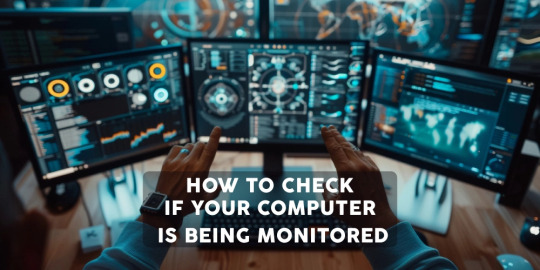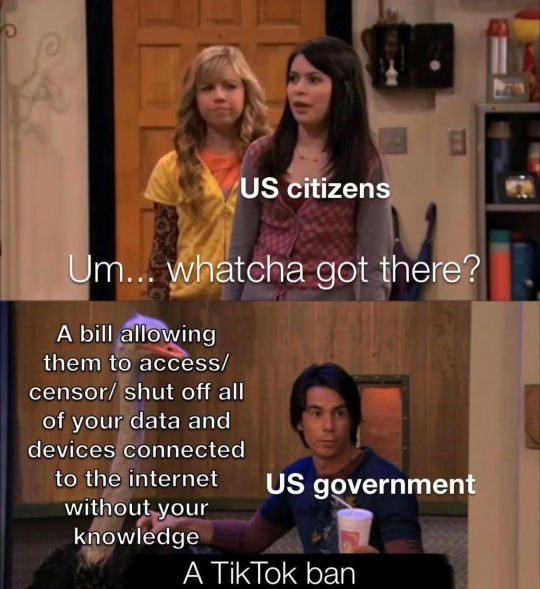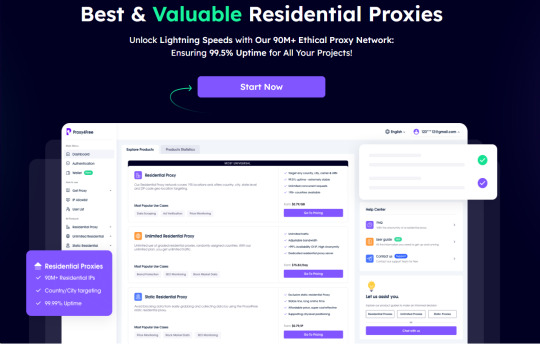#Privacy Protection
Explore tagged Tumblr posts
Text
YouTube is Analyzing everything about you.
No I'm serious. Everything. Today I checked my YouTube settings, because I'm not particularly happy with YouTube, and the way they seem to be catering to and protecting it's extremist far right misogynistic racist radicals. Wow, what a shocker! They also seem to be censoring everyone else on the platform who don't share these dangerous and harmful ideals... God forbid I bring logic and reasoning into an argument right!?
But that's when I discovered just how insidious the site truly is .. mind you, all kinds of people use YouTube, and they are absolutely deadset on letting us know: HEY, DID YOU KNOW THAT KIDS USE THIS SITE TOO!!!
And yet, they bully and defame anyone who preaches equality and love, Rather than unsubstantiated and unearned hate ..? hmmm... Very SUS indeed...
But I'm talking about their insidious practices regarding information collection. Every site has cookies, unfortunately there is no such thing as privacy anymore, that is true .. but YouTube takes it up a notch with invasive and disgusting tactics. They analyze how old you are, where you are, they may even speculate on your employment status, your home, and whether you're married and have kids or not .. EVEN YOUR EDUCATION LEVEL. (am I sensing some classism too?)
The list goes on...
Also, YouTube seems to know that no, I currently don't have kids, and yet they keep pushing baby ads, and pamper commercials at me? Seems not creepy or predatory at all! Oh, YouTube...Are you as a PLATFORM trying to indoctrinate me, and put me into your little placid 1950s box? I think you are!!
As I brought up earlier— they prey on all types of people, treat the ones that fit their outdated ideas better. They claim to be a progressive and welcoming place, (just take one look at their homepage) however, they've shown anything but. They are not allies unless it suits their own needs at the time and makes them money... Or garners ad revenue. They'll scream gay rights during pride month, and rip down the rainbow flags and flag content creators like trash right after.
And ultimately actions speak louder than words ever will.
So why are they as a VIDEO MAKING SITE, trying to find out these things about ANYONE? LET ALONE CHILDREN??
Honestly we should just deplatform YouTube as an entire site at this point.
Thanks for coming to my Ted Talk.
#i'm serious#i'm mad#yourube#youtube comments#youtube channel#youtube video#data#data analytics#data privacy#privacy rights#private#internet privacy#privacy concerns#privacy violations#privacy protection#saftey#radical feminist safe#get a grip#Get angry people#reproductive rights#republicans#reputation#repsshoes#fuck the republikkkans#donald trump#fuck trump#trump#kamala harris#vote kamala#kamala 2024
7 notes
·
View notes
Text
profits over people — the corporate hellscape of internet censorship, safety, privacy, data mining…
#capitalism#internet censorship#internet#data mining#profit over people#apple#microsoft#kosa#chrome#google#privacy#privacy protection#internet privacy#monopoly#european union#eu#corporate hellscape#kids online safety act#2024
11 notes
·
View notes
Text

Regulating for Harmony: AI, Privacy, and the Quest for Equilibrium in the Digital Era
In the intricate landscape of the digital era, the interplay between Artificial Intelligence (AI) innovation and privacy concerns presents a profound challenge, necessitating a nuanced regulatory approach to maintain equilibrium. Julie Brill, Microsoft’s Chief Privacy Officer, offers invaluable expertise, garnered from her distinguished career spanning regulatory bodies and the tech industry, to inform this delicate balancing act.
The convergence of regulatory frameworks for AI and privacy, as evidenced by the European Union’s General Data Protection Regulation (GDPR) and the proposed AI Act, sets a significant precedent. This harmonization, potentially to be emulated by the United States, with California at the vanguard, underscores the growing acknowledgment that AI’s development and deployment must be inextricably linked with robust privacy safeguards. To achieve this synergy, policymakers, innovators, and privacy advocates must collaborate on crafting a regulatory framework that reconciles innovation with protection, ensuring the digital ecosystem’s alignment with societal values.
Effective regulation is distinguished not solely by its legislative provisions, but critically by the efficacy of its enforcement mechanisms. The GDPR and California’s data breach notification law exemplify this dual imperative, demonstrating how well-crafted regulations can elevate global standards and cultivate a culture of accountability among organizations. This emphasis on both regulation and enforcement highlights the complexity of striking a harmonious balance between the imperative to innovate and the necessity to protect.
In navigating this complex digital terrain, Brill’s career trajectory offers instructive guidance. By embracing interdisciplinary approaches, fostering dialogue between regulatory, technical, and privacy disciplines, and engaging in open communication, professionals can navigate the intertwined realms of AI and privacy with greater agility. In an era where these domains are increasingly interdependent, such adaptability and collaborative spirit will be essential for maintaining equilibrium.
The pursuit of regulatory harmony in the digital age is contingent upon addressing several pivotal challenges, including the cultivation of international cooperation to establish adaptable yet consistent standards, the innovation of Privacy-Enhancing Technologies (PETs) to guarantee anonymization, and the enhancement of public and regulatory literacy regarding the intricate relationships between AI, privacy, and effective regulation. By addressing these challenges through a concerted effort, we can foster a digital ecosystem where technological innovation, privacy, and regulation coexist in a state of dynamic equilibrium.
Brill’s insights underscore that regulating for harmony in the digital era is a continuous process, demanding ongoing collaboration, adaptation, and a deepening understanding of the interplay between AI, privacy, and regulation. By embracing this challenge, we can ensure the digital landscape evolves in a manner that enriches lives while respecting the privacy and dignity of all, striking a lasting harmony between innovation and protection.
Julie Brill with Prof. Aileen Nielsen: Artificial Intelligence & The Future of Privacy (The Berkman Klein Center for Internet & Society, December 2024)
youtube
Monday, December 9, 2024
#privacy protection#technological innovation#privacy concerns#digital landscape#collaborative approach#interdisciplinary approaches#regulatory challenges#technological advancements#innovative technologies#privacy safeguards#adaptability#regulatory frameworks#harmony#conversation#ai assisted writing#machine art#Youtube
2 notes
·
View notes
Text

AN OPEN LETTER to STATE GOVERNORS & LEGISLATURES (ALASKA ONLY)
Out-ing Minority Students to Their Abusers - Safeguards needed in HB 382
I am writing to express my profound concerns regarding the proposed HB 382 legislation: Out-ing Minority Students to Their Abusers, which aims to involve parents in the education process but may inadvertently expose vulnerable LGBTQ+ students, and others, to harmful environments. As any survivor of domestic violence is acutely aware; ensuring the safety and well-being of all students is paramount, especially those from marginalized communities. While I acknowledge the intention behind HB 382, it is crucial to consider the potential for misuse of this legislation, which would further exacerbate the already high rates of harm and mortality among LGBTQ+ youth. Therefore, I call you to incorporate additional safeguards into the bill to protect the privacy and safety of these students, or alternatively, reject the bill entirely to rework it with the safety of ALL students prioritized. Specifically, measures must be implemented to ensure that information about a student's gender identity and romantic interests is not disclosed without their explicit consent to anyone. The goal of our education system should be to foster an inclusive, safe, and supportive environment for all students, regardless of their personal demographics. By prioritizing the privacy and safety of vulnerable students, we can ensure that every child has the opportunity to learn, thrive, and grow without fear of discrimination or harm. I urge you to consider these concerns and take action to protect the rights of students in Alaska. Thank you for your attention to this important matter. Protect the privacy of all students! We’re so pro-life; we’ll martyr our queer! Safeguards needed in HB 382!
📱 Text SIGN PSHMCT to 50409
🤯 Liked it? Text FOLLOW IVYGORGON to 50409
#ivygorgon#PSHMCT#protect trans kids#protect trans youth#Out-ing Minority Students to Their Abusers#HB 382#alaska politics#lgbtq rights#queer rights#gay rights#lgbtqia rights#lgbt rights#Education#Student Safety#Human Rights#Equality#Privacy Protection#Student Wellbeing#Alaska Legislature#intersectional#Inclusion#Safe Schools#safe space#Protect Our Youth#Advocacy#Social Justice#activate your activism#civil rights#civil rights movement#gender equality
6 notes
·
View notes
Text
How to check if your computer is being monitored
In today's digital age, the issue of privacy and security is more pressing than ever. Whether you’re a casual user or a professional, understanding if your computer is being monitored is crucial. This guide will delve into the signs of monitoring, tools to detect it, and steps to safeguard your privacy.

Understanding Computer Monitoring
Before diving into the signs and detection methods, it’s essential to understand what computer monitoring entails. Monitoring can involve tracking your online activity, keystrokes, file access, and even webcam usage. This can be done by malicious software (malware), spyware, or legitimate monitoring software used by employers or parents.
Types of Monitoring
Malware and Spyware: These are malicious programs that can be installed without your knowledge. They can track your activities and send data back to an attacker.
Keyloggers: This type of software records keystrokes, capturing sensitive information like passwords and personal messages.
Remote Access Tools (RATs): These tools allow someone to control your computer remotely, monitoring your screen, accessing files, and even using your webcam.
Legitimate Monitoring Software: Often used in corporate environments, this software tracks employee activity for productivity or compliance reasons. While legal, it can still infringe on personal privacy.
Signs That Your Computer May Be Monitored
Recognizing the signs that your computer might be monitored is the first step in protecting yourself.
1. Unusual System Behavior
Slow Performance: If your computer suddenly becomes sluggish, it might be due to monitoring software consuming resources.
Frequent Crashes or Freezes: Unexpected system crashes can indicate underlying issues, including malware.
2. Suspicious Programs
Unknown Applications: Check your installed programs for any unfamiliar applications. Many monitoring tools disguise themselves as legitimate software.
High Resource Usage: Use the Task Manager (Windows) or Activity Monitor (Mac) to look for processes consuming excessive CPU or memory.
3. Network Activity
Unexplained Network Traffic: Use network monitoring tools to check for unusual data being sent or received. High outbound traffic could indicate that data is being transmitted without your consent.
Blocked Ports: Monitoring software often uses specific ports to communicate. If you notice blocked ports that you didn’t configure, it could be a red flag.
4. Webcam and Microphone Behavior
Indicator Light Activation: If your webcam or microphone is being accessed without your knowledge, the indicator light may be on even when you're not using it.
Unexpected Recordings: Check for unusual files that could be recordings made by your microphone or webcam.
5. Browser Behavior
Unusual Browser Extensions: Check for extensions you didn’t install. Some can track your browsing activity.
Unexpected Redirects: Frequent redirects to strange sites or altered search results can indicate tracking.
6. Security Alerts
Antivirus Notifications: If your antivirus software frequently alerts you about threats, it may indicate that monitoring software is present.
Firewall Alerts: Unusual outgoing connection attempts can suggest that an unauthorized program is trying to access the internet.
Tools to Detect Monitoring Software
If you suspect that your computer is being monitored, several tools can help you investigate further.
1. Antivirus and Anti-Malware Software
Using a reliable antivirus or anti-malware program can help detect and remove malicious software. Some popular options include:
Malwarebytes: Excellent for detecting and removing malware and spyware.
Norton: Offers comprehensive protection against various types of threats.
2. Network Monitoring Tools
Tools like Wireshark can help analyze network traffic and identify suspicious activity. You can monitor data packets to see if there are any unexpected connections.
3. Task Manager / Activity Monitor
Regularly check the Task Manager (Windows) or Activity Monitor (Mac) for processes that look unfamiliar or suspicious. Research any questionable applications before taking action.
4. System Scans
Use built-in tools to perform system scans:
Windows Defender: Run a full scan for malware and spyware.
Mac’s Built-in Security Features: Use the Malware Removal Tool for additional scanning.
5. Firewall Monitoring
Make sure your firewall is active and monitor logs for any unusual activity. A firewall can block unauthorized access attempts and alert you to potential threats.
Steps to Protect Your Privacy
If you determine that your computer is being monitored or you want to prevent it from happening, follow these steps to enhance your security.
1. Update Your Software Regularly
Keeping your operating system and all software up-to-date ensures that you have the latest security patches. This reduces vulnerabilities that can be exploited by monitoring tools.
2. Use Strong Passwords
Implement strong, unique passwords for all your accounts and devices. Consider using a password manager to generate and store complex passwords securely.
3. Enable Two-Factor Authentication
Two-factor authentication (2FA) adds an extra layer of security by requiring a second form of verification, making unauthorized access much more difficult.
4. Install a Firewall
Ensure you have a firewall activated, whether it’s built-in (like Windows Firewall) or third-party. This helps control incoming and outgoing network traffic.
5. Be Cautious with Downloads
Avoid downloading software from untrusted sources, as this can introduce malware to your system. Always verify the legitimacy of software before installing it.
6. Regularly Review Permissions
Check application permissions on your device regularly. Revoke access for any apps that do not need to access your camera, microphone, or location.
7. Use a VPN
A Virtual Private Network (VPN) encrypts your internet connection, making it difficult for anyone to monitor your online activities.
8. Educate Yourself
Stay informed about the latest cybersecurity threats and best practices. Knowledge is your best defense against monitoring.
When to Seek Professional Help
If you suspect your computer is being monitored and cannot identify or remove the software yourself, consider seeking professional help. Cybersecurity experts can perform a thorough analysis of your system and provide tailored solutions.
Conclusion
Understanding if your computer is being monitored is vital for protecting your privacy. By recognizing the signs, utilizing detection tools, and implementing security measures, you can safeguard your personal information. Remember, vigilance is key in the ever-evolving landscape of digital security. Stay informed, proactive, and secure in your online presence.
#Computer Security#Online Privacy#Cybersecurity#Monitoring Software#Malware Detection#Privacy Protection#Digital Security#Keyloggers#Network Monitoring#Antivirus#VPN#Internet Safety#Personal Data Security#Remote Access Tools#Digital Awareness
2 notes
·
View notes
Text
An open letter to the President & U.S. Congress
The DATA Act and the RESTRICT Act are un-American
518 so far! Help us get to 1,000 signers!
I'm alarmed by the Ban TikTok discussion & the RESTRICT Act. We're a democratic country with a First Amendment that guarantees free expression. How does banning a social media platform abide by that principle? Especially since the US government condemns authoritarian governments in other parts of the world for blocking US-based social networks. Examples:
When Nigeria banned Twitter for seven months in June 2021, the U.S. condemned it, reiterating its support for "the fundamental human right of free expression & access to information as a pillar of democracy."
Individuals responsible for the blocking of social media applications in Iran were condemned as "engaging in censorship activities that prohibit, limit, or penalize the exercise of freedom of expression or assembly by citizens of Iran."
When American digital platforms have been banned or severely restricted by governments--including the Chinese Communist Party, Pakistan, & Uganda--seeking to silence & obstruct the open flow of communication & information, the US calls these entities out for it. So why are we doing the same?
TikTok is a red herring. The DATA Act & the RESTRICT Act are very broad & could lead to other apps or communications services with connections to foreign countries being banned in the US. The stated intention is to target apps/services that pose a threat to national security; the way it's currently written raises serious human & civil rights concerns that should be far more important to you.
Caitlin Vogus says: "Any bill that would allow the US government to ban an online service that facilitates Americans' speech raises serious First Amendment concerns…" And those concerns will impact marginalized & oppressed people & groups more.
The "reasoning" behind Ban TikTok is not sound. The racist fearmongering around China is bad enough. Worse is the core of the argument -- data being collected & shared & used against people -- is a problem with ALL social media. Why isn't Congress focusing on that? The apps on your phone (Facebook, Messenger, Instagram, Twitter) are constantly monitoring you & sending information about you to data brokers. Info that can be easily tied to you as an individual despite claims that all the data is "anonymized".
Congress should be addressing the larger problem & not one social network. Restricting what data they can collect about users & forbidding them from selling that data will address the issue with TikTok, too.
I urge you to kill the DATA Act & the RESTRICT Act. They need to be tossed out & more measured legislation proposed in their place that addresses the foundational problems of social media apps & services & the data they collect & who they share it with & how they & other entities use that data.
I know that's not as easy or sexy as Ban TikTok! It does address our Constitutional right to assemble & free expression. That's far more important than knee-jerk reactions & bandwagon jumping.
▶ Created on March 31, 2023 by K T
Text SIGN PNSIMC to 50409

#KT#PNSIMC#resistbot#RESTRICT Act#TikTok Ban#Freedom Of Speech#First Amendment#Data Privacy#Civil Rights#Open Internet#Social Media Freedom#Digital Rights#Online Censorship#Data Protection#Surveillance#Free Expression#Information Access#Tech Policy#Human Rights#Data Broker#Social Media Regulation#Free Speech Crisis#Internet Freedom#Censorship#Government Control#Privacy Rights#Resist Censorship#Fight For Privacy#Privacy Protection#Save TikTok
92K notes
·
View notes
Text
Mobile Notaries & Privacy: What You Need to Know

A mobile notary plays a critical role in handling sensitive documents, making confidentiality and security a top priority. Whether notarizing legal agreements, loan documents, or providing an apostille service, maintaining privacy is essential. Clients rely on notaries to protect their personal and financial information, making it crucial to follow strict security measures.
Read More: https://www.raismobilenotary.com/mobile-notaries-privacy-what-you-need-to-know
0 notes
Text
Dark Patterns: How They Work, How to Spot Them, and How to Stay Safe.
Sanjay Kumar Mohindroo Sanjay Kumar Mohindroo. skm.stayingalive.in Learn how to identify and protect yourself from dark patterns in digital spaces. Discover common deceptive tactics and practical solutions. In today’s digital world, users interact with countless websites and applications daily, expecting a seamless and trustworthy experience. However, not all digital experiences are built with…
#Avoiding Scams#Consumer Protection#Dark Patterns#Deceptive Design#Digital Ethics#Ethical Design#Manipulative UX#News#Online Safety#Privacy Protection#Sanjay Kumar Mohindroo#User Rights
0 notes
Text
Metadata’s Invisible Threads: A Look at Privacy and Digital Identity
Threads of the Digital Cosmos: Metadata Illuminating the Invisible Web of Connectivity. Introduction Metadata is the silent architect of our digital lives. Often unnoticed, it functions as the invisible thread connecting and organizing content across the internet. But while it enables seamless functionality, metadata also raises significant questions about privacy and security. This article…

View On WordPress
#AI innovation#cybersecurity#data visualization#digital ecosystem#digital security#future technology#glowing threads#interconnected data#metadata#privacy protection
0 notes
Text
K7 Total Security for Windows
K7 Total Security is a comprehensive cybersecurity solution developed by K7 Computing to provide multi-layer protection for personal computers. With over three decades of expertise, K7 Total Security leverages advanced technologies, such as Cerebro Scanning, to deliver robust defense against evolving malware and cybersecurity threats. Key Features of K7 Total Security 1. Real-Time Threat…
#AI-based security#best cybersecurity tools#Cerebro Scanning#cybersecurity software#K7 Total Security#malware protection#online transaction security#parental control software#privacy protection#real-time threat detection
0 notes
Text
CFPB Takes Aim at Data Brokers in Proposed Rule Amending FCRA
On December 3, the CFPB announced a proposed rule to enhance oversight of data brokers that handle consumers’ sensitive personal and financial information. The proposed rule would amend Regulation V, which implements the Fair Credit Reporting Act (FCRA), to require data brokers to comply with credit bureau-style regulations under FCRA if they sell income data or certain other financial…
#AI#Artificial Intelligence#CFPB#consent#Consumer Financial Protection Bureau#CRA#credit history#credit score#data brokers#debt payments#Disclosure#Fair Credit Reporting Act#FCRA#financial information#personal information#privacy protection#Regulation V
1 note
·
View note
Text
Guide to Optimizing Multi-Threading and Concurrent Connections for Proxies IPs
In today's data-driven Porfiles, the dependence of online business on Proxies is becoming more and more evident. Whether it is real-time data crawling, fast traffic management, or concurrent request support in a multi-user environment, Proxies IP's multi-threading and concurrent connection technologies are core tools. These technologies not only enhance the operational efficiency of the Proxies system, but also bring more flexibility in business operations.
For Proxies IP management systems, understanding and effectively utilizing multithreading and concurrent connections is key to staying competitive. Multi-threading techniques allow the system to process multiple requests at the same time, while concurrent connections can further increase the number of simultaneously active connections, which together ensure a smoother user experience. This article will explain the practical application of these concepts step-by-step, delving into their unique advantages in Proxies IP management, as well as the technical challenges that organizations may face during their use and how to deal with them. In this way, it will not only help users better understand the practical application of Proxies IP technology, but also provide guidance for enterprises to optimize their business processes.
Basic concepts of multithreading and concurrency
Multi-threading and concurrent connections are core concepts that enhance the performance of Proxies IP management. With multithreading, a Proxy Service can handle multiple requests at the same time, and this parallel processing significantly improves the efficiency of task execution.

For example, web servers are able to cope with a large number of client requests during high loads by multithreading, while maintaining fast responses and avoiding the congestion caused by single threads.
Concurrent connections, on the other hand, refer to the number of simultaneous connections maintained within a Proxies system at a given moment. Highly concurrent connections are especially important in Proxies management, especially when the system needs to handle a large number of requests at the same time. With multi-threading and concurrent connections, Proxy Services are not only able to handle more traffic, but also allocate resources more flexibly to provide a smoother experience for users.
Limitations of Single-Threaded Proxies Management
The core function of Proxy Service is to act as an intermediary between the client and the target server, guaranteeing the security and privacy of data transmission and improving the overall efficiency. However, in single-threaded mode, the processing power and response speed of Proxies management will be significantly limited. The single-threaded management model can only process each request one by one, waiting for the completion of the previous task before processing the next request. This design leads to higher latency, which reduces the response speed of the Proxies service and affects the user experience.
In high-frequency request scenarios such as data collection and application testing, it is especially difficult to meet the demand in single-threaded mode. When a large number of client requests are centrally influxed, single-threaded systems are often overloaded, resulting in higher latency and affecting system performance and user experience.
Efficiency Benefits of Multi-Threaded Proxies Management
Multi-threading technology is an effective way for Proxies management to break through the bottleneck of single-threading. Multi-threading allows Proxy Services to handle multiple requests at the same time and is no longer limited to the mode of completing tasks one by one, which significantly improves the system's operational efficiency and response speed.
In scenarios such as data collection, multi-threading can assign requests to different Proxies IPs, dispersing the request pressure and avoiding high-frequency requests concentrated on a single IP to trigger the server's blocking mechanism. By assigning independent Proxies IPs to each thread, the risk of being blocked can be significantly reduced, accelerating data collection and improving crawling efficiency. It is worth noting that although multi-threading significantly improves speed, an unreasonable number of requests may lead to server blocking. Therefore, it is necessary to reasonably configure the number of concurrent connections and follow the principle of compliant crawling to ensure that business operations are legal and compliant.
The Important Role of Concurrent Connections

The number of concurrent connections indicates the number of active connections within the Proxies management system at the same moment. The upper limit of this value is not only affected by Proxy Service bandwidth and processing capacity, but also constrained by network resource configuration and proxy type (e.g., HTTP, SOCKS, etc.). In a highly concurrent operating Porfiles, a reasonable concurrent connection configuration can help to improve the overall system performance and user experience.
Concurrent connections have a direct impact on the speed and efficiency of the system and are closely related to the balance between supply and demand of Proxies resources. When there are sufficient Proxies resources, a higher number of concurrent connections can ensure fast task completion and improve system response speed; conversely, when Proxies resources are in short supply, too high a number of concurrent connections may increase latency or even trigger system congestion. Therefore, when choosing Proxies, it is crucial to ensure that the system has a reasonable upper limit of concurrent connections to cope with large-scale data requests.
The Challenges of Multi-Threading and Concurrent Connections
Although the application of multithreading and concurrent connections improves the performance of Proxies, it also poses a number of technical challenges, notably:
Resource Competition: Multiple threads may request the same resource at the same time, resulting in system performance degradation.
Data Consistency: Multi-threaded access to shared data can easily trigger data inconsistency issues that need to be managed synchronously.
Thread Leakage: Threads that are not properly terminated may exhaust system resources and affect system stability.
To address the above challenges, Proxies management systems often use a variety of technical strategies to optimize thread management and concurrent connection configuration. For example, the establishment of a thread pool can reduce the frequent creation and destruction of threads and lower the system load; thread scheduling and resource allocation priority management can ensure that critical tasks are given higher priority in resource allocation; data synchronization management prevents concurrent modification of shared resources by multiple threads through the use of thread locks and other mechanisms, thus ensuring data consistency. With these techniques, the stability and performance of Proxies in a highly concurrent Porfiles environment will be effectively guaranteed.
How to Optimize Multithreading and Concurrency
For effective management of multithreading and concurrent connections, here are a few common optimization strategies:
Thread Pool Management: Reduce resource consumption and ensure that threads can be reused cyclically through a fixed number of thread pools.
Thread scheduling: By setting the priority of different threads, resources are reasonably allocated and important tasks are prioritized.
Data synchronization: With the help of thread locks and other mechanisms to achieve synchronized access to shared data, to avoid conflicts caused by resource competition.
Exception handling: error handling mechanisms are set up in multi-threaded code to avoid system interruptions by catching and handling exceptions.
Real-time monitoring: Detect thread execution status and system load through monitoring tools to identify and resolve performance bottlenecks in a timely manner.
These strategies not only have significant results in optimizing the configuration of multi-threaded and concurrent connections, but also help Proxies management systems maintain stable performance in complex Porfiles environments.
Multithreading and Concurrent Connections in Proxies Applications

Taking data capture as an example, Proxies IP combined with multi-threading technology can effectively improve the efficiency of web page data capture. Multi-threading technology can assign different Proxies IPs to each crawling request, thus dispersing the request pressure and reducing the risk of being blocked by the target server. In addition, the concurrent connection configuration of the Proxies management system can also significantly increase the request speed, realizing efficient and fast high-volume data capture.
Here we recommend the use of Proxy4Free Residential Proxies ServiceProxy4Free Residential Proxy Service is recommended here! As a leading IP Proxies service provider, Proxy4Free supports high speed internet connection with unlimited traffic and bandwidth of over 30MB/S, and flexible choice of Proxies from 195 countries and regions around the globe. its service has supported over 20,000+ individual users and 100+ enterprise users, and is especially suitable for Cross-border market research advertising monitoring advertising monitoring advertising monitoring, price comparison and other business scenarios that require high concurrency and high traffic processing.

Proxy4Free also provides users with high anonymity and strong security to ensure that data privacy is not compromised. Proxies are easy to configure and use, making your network operations more efficient. For multi-threaded and concurrent connections that require stable support, Proxy4Free is the ideal choice for an efficient network experience.

Click on the link to try it out now!
Choosing a high-quality Proxies service is crucial for applications with multiple threads and concurrent connections. With professional Proxies, organizations and developers can more easily handle large-scale requests while safeguarding the security of data transmission. Our Proxies not only come with high standards of encryption and Secure Proxy, but also support seamless integration with a wide range of proxy management tools to help users automate data collection and efficient network operations.
For users with high demand for globalized data capture, social media monitoring or content management, we provide Proxies with no extra charge on concurrent connections, so users don't need to worry about the extra expenses increased by concurrent connections and enjoy a more efficient and stable service experience.
Conclusion
Multi-threading and concurrent connection technologies are key elements in the Proxies IP management system. Properly configured, these technologies enable Proxies to maintain efficient and stable responses when dealing with high-volume requests. Multi-threading technology improves the request processing speed, and concurrent connections guarantee smooth operation in a multi-tasking Porfiles environment. By optimizing the configuration of multithreading and concurrent connections, Proxies can provide users with more efficient network support and meet the needs of rapid business expansion.
When using Proxies, the reasonable use of multi-threading and concurrent connection technology can efficiently fulfill the needs of data collection and information processing. At the same time, by choosing professional Proxy IP management services, users can not only significantly improve system performance, but also obtain comprehensive Secure Proxy protection and stability support.
0 notes
Text
隱私權保護政策
非常歡迎您光臨「多1個站長」(以下簡稱本網站),為了讓您能夠安心的使用本網站的各項服務與資訊,特此向您說明本網站的隱私權保護政策,以保障您的權益,請您詳閱下列內容: 一、隱私權保護政策的適用範圍隱私權保護政策內容,包括本網站如何處理在您使用網站服務時收集到的個人識別資料。隱私權保護政策不適用於本網站以外的相關連結網站,也不適用於非本網站所委託或參與管理的人員。 二、個人資料的蒐集、處理及利用方式當您造訪本網站或使用本網站所提供之功能服務時,我們將視該服務功能性質,請您提供必要的個人資料,並在該特定目的範圍內處理及利用您的個人資料;非經您書面同意,本網站不會將個人資料用於其他用途。本網站在您使用服務信箱、問卷調查等互動性功能時,會保留您所提供的姓名、電子郵件地址、聯絡方式及使用時間等。於一般瀏覽時,伺服器會自行記錄相關行徑,包括您使用連線設備的IP位址、使用時間、使用的瀏覽器、瀏覽及點…
0 notes
Text
youtube
0 notes
Text

WebDefender - Desktop Chrome Extension_CPA Sale_US CPA DOI Survey
WebDefender is a robust Chrome extension designed to enhance online security and privacy. It protects users from malicious sites, phishing attempts, and unwanted tracking. By using this tool, users can navigate the web with confidence, ensuring their sensitive information remains secure while enjoying a safer browsing experience across all countries.
Available: All countries
Price: 19$
0 notes
Text
Is Your Phone Really Listening to You? The Shocking Truth Revealed!
You might think it’s just a wild conspiracy theory, but guess what? Your phone could totally be eavesdropping on what you say! Recently, Cox Media Group (CMG) dropped a bombshell, revealing that smartphones are listening in so they can serve up ads just for you. This juicy tidbit popped up during a pitch to investors, where the marketing crew—working with big names like Facebook and Google—showed…
#Active Listening software#AI news#Artificial Intelligence#Cox Media Group#Data Privacy#Eaves dropping#Google#gossip tok videos#Meta#Privacy Concerns#privacy protection#Smartphone Privacy#Targeted Ads#tech news
0 notes